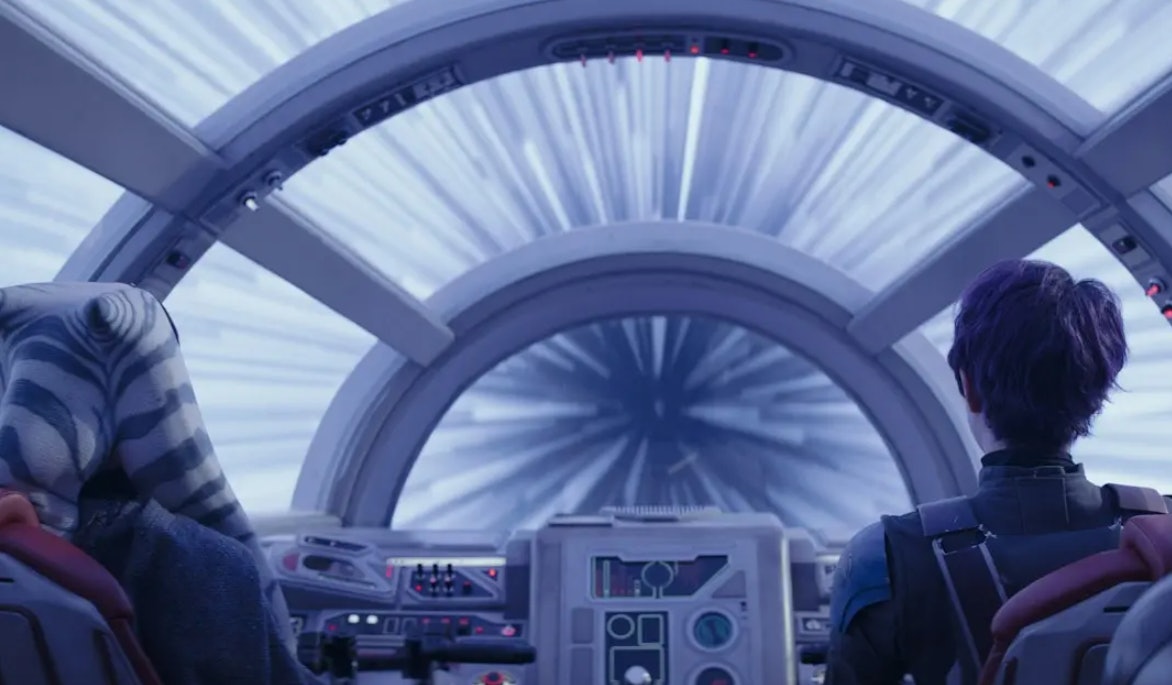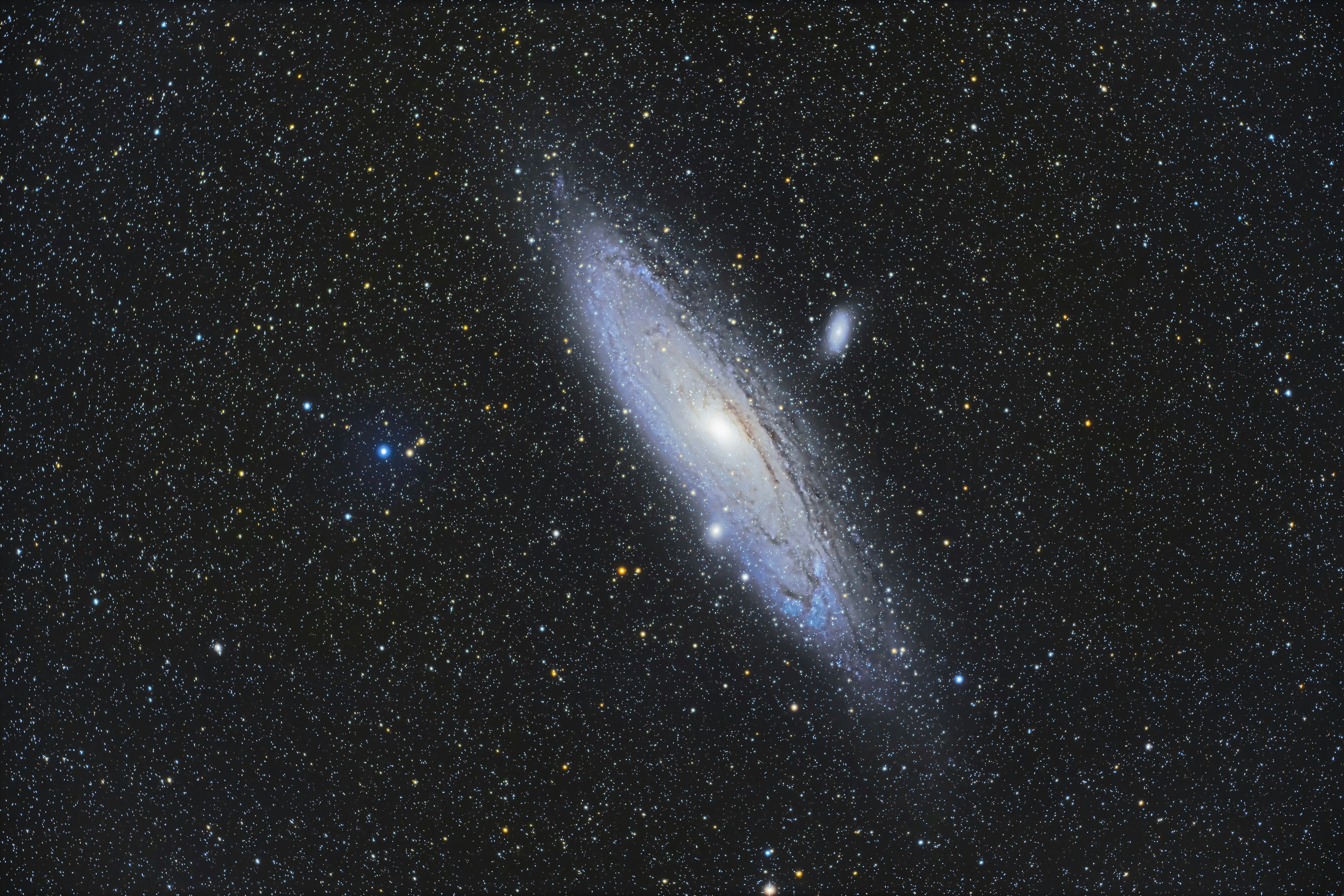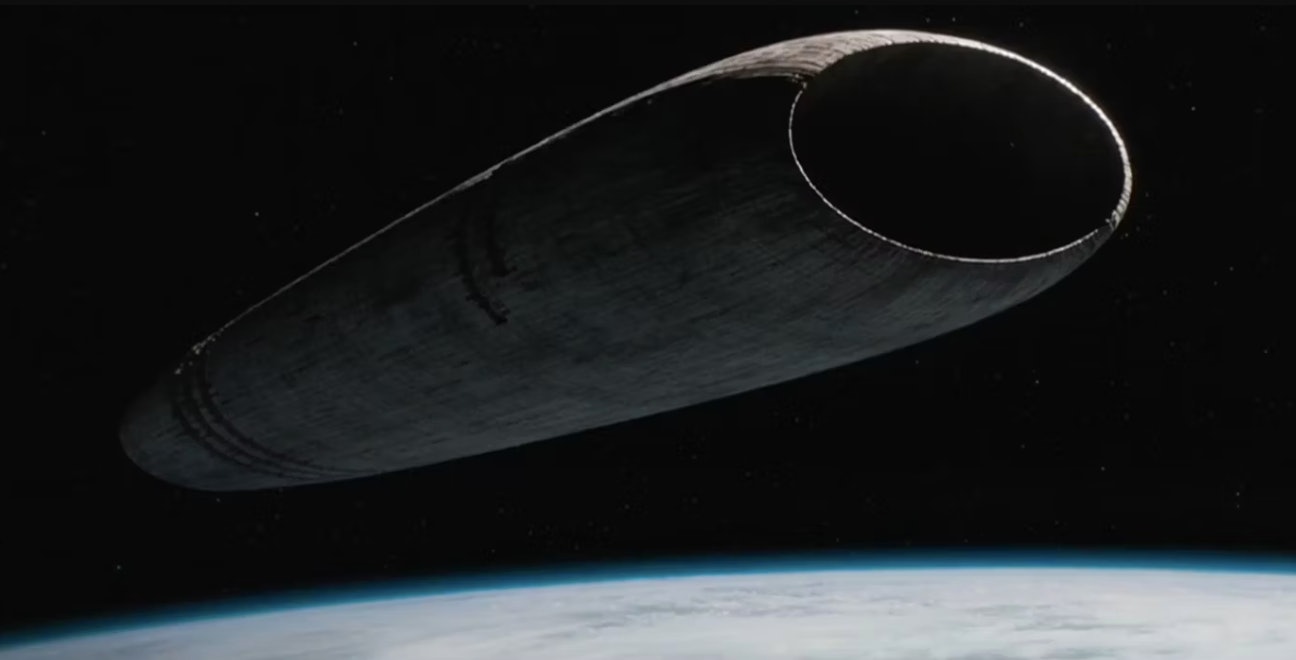
Ahsoka is taking familiar Star Wars characters to a place they have never gone before: a different galaxy, promising to be every bit as sprawling and vibrant and beautiful as the one we’ve long seen.
But this intergalactic voyage is not one that can be accomplished with a simple hyperspace jump. To reach that other galaxy and find the semi-legendary Grand Admiral Thrawn, the Imperial remnants must carefully plot their course with a map hidden within a sought-after orb. And they’ve had to construct a special, high-powered hyperdrive ring called the Eye of Sion to make the jump.
The universe of Star Wars is, of course, technologically far in advance of our own world. But with our current knowledge of physics and space travel, could we too travel to other galaxies? Thanks to the distances involved, the answer is a resounding maybe.

Under physics as we understand it today, even the shortest intergalactic voyage would take longer than the entire history of humanity on Earth. And yet some scientists have already begun thinking about what might conduct such a journey. Some of those scientists want to understand what extraterrestrials might leave behind. Others already imagine humanity in its place.
“It is not too early to start thinking about it,” Andrew Gould, an astronomer at the Ohio State University, tells Inverse.
Space, as the saying goes, is big. Traveling to even nearby stars is already daunting enough. Modern interplanetary probes would take tens of thousands of years to reach Proxima Centauri, just four light-years away. Hypothetical starship designs like Project Daedalus might shorten the flight time to just a few dozen years, but it would still take a significant chunk of a single lifetime to even reach one star.
And those are just the nearest stars; the closest galaxies are orders of magnitude further still. The shortest journeys that would qualify as “intergalactic” are perhaps bound for one of the satellite galaxies that orbit in the Milky Way’s outskirts. The nearest to us, the Canis Major Dwarf Galaxy, is still around 25,000 light-years away from our solar system. The closest galaxies similar in size to our own, such as Andromeda, are around 2.5 million light-years away.
In other words, the trip is virtually impossible. But what if we had Star Wars technology at our disposal?
Enter the Hyperspace Engines ... or Not

Traversing those 2.5 million light-years in anything resembling a human-friendly timescale requires undiscovered new realms of physics, such as the warp drive that physicist Miguel Alcubierre proposed in the 1990s. Physicists are split as to whether a warp drive is even possible. The general consensus is that, if one could exist, it would require some type of “exotic matter” with negative mass.
Some scientists even question why intergalactic voyages are necessary — after all, our own Milky Way already has a mind-crushingly vast 100 billion to 400 billion stars. Humans have barely scratched the surface of a single one. “What do you need in the other galaxy that you don’t have in your own?” Adam Frank, an astrophysicist at Rochester University, tells Inverse.
Even if we can’t have warp drives, the solutions for traversing those distances seem to live in the realms of science fiction. For one, we might have to shift our idea of what “travel” means.
“If you're talking about sending warm human bodies on a multi-million-year cruise to another galaxy, that would indeed be unimaginably difficult,” Jay Olson, an astrophysicist at Boise State University, tells Inverse. “But, if you imagine sending something tiny and automated that carries the information for building life, including human bodies and minds, the voyage becomes dramatically easier.”

Take Gould, who proposed probes that traveled to Andromeda by way of a truly cosmic slingshot. Just as missions to the outer Solar System today use Venus’s gravity to accelerate, Gould’s probes would use a black hole to boost themselves to some 10 percent of light speed: enough to reach Andromeda and back in a brisk 50 million Earth years.
Another proposal, by two Oxford academics, suggested that a spacefaring civilization could spread between galaxies by transforming a Mercury-sized planet into a fleet of self-replicating robots. Pushed to near-light-speed, this swarm of probes could — again, in a few dozen million years — not merely seed one galaxy, but a myriad.
"I looked into it because I am interested in the limits of what intelligent life can do in the universe,” Anders Sandberg, a senior research fellow at Oxford University, and one of this paper’s authors, tells Inverse.
Scientists have their reasons for studying the unfathomable. Some are seeking fleeting glimpses of one possible, far, far future: a future in which humanity, having expanded throughout one galaxy, explores another one to ensure the species’ survival. Gould specifically believes probes to Andromeda might serve as forward scouts to warn our distant descendants if a militaristic, expansionist civilization has arisen there.

More in the present, scientists believe that understanding could help us scour the stars for intelligent life. If the universe is filled with technologically advanced societies that have developed the capacity to travel between galaxies, astronomers might catch those societies’ wake.
“It suggests that we may want to look for the side effects of sending small, fast probes,” says Sandberg. “Interactions with interstellar and intergalactic gas, the blue-shifted light from rockets slowing things down, ‘garbage’ from launch systems moving fast through space.”
As of yet, we’ve never seen such a society.
“There is a reason, if you look at science fiction, that most science fiction stays within the galaxy,” says Frank. “The distances between the stars are already so large that it’s hard to actually imagine what kind of society you’d have that would actually be intergalactic.”
Neither do we see such a society in Star Wars. Until now, the franchise has almost always stayed within its own Milky Way-esque galaxy, barring a few minor exceptions. (The planet Kamino introduced in Star Wars Episode II: Attack of the Clones, for instance, is said in some sources to be located near a dwarf companion of Star Wars’s primary galaxy.) That fact — and the incredible difficulties involved in making the leap between galaxies — makes Ahsoka’s intergalactic voyage an even more remarkable feat.







